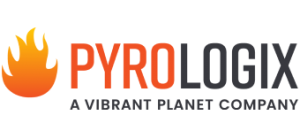Development of Fuel & Fire Behavior Training material
The National Interagency Fuel Technology Transfer team—NIFTT, as it was known until recently—contracted with Pyrologix to produce fuel and fire behavior modeling training materials for fire and fuel planners. For the project Pyrologix produced two training courses and a comprehensive document laying the foundation for operational wildfire behavior modeling as it is practiced in the United States. All of this material can be found at the website of NIFTT’s new home, the Fuel and Fire Ecology (FFE) section of the Wildland Fire Research, Development and Application (WFMRDA) project.
- The first course (FBFM40) pertains to the set of 40 surface fuel models developed by Joe Scott and Robert Burgan in 2005. The course consists of three lessons totaling about three hours. This course is the best available online introduction to the set of 40 fuel models. Please visit the WFMRDA-FFE Courses & Registration page if you wish to take this free online course.
- The second course (Nomographs) is also a four-lesson, three-hour introduction to the new nomograph format introduced, in 2007, in this publication. A nomograph is a graph-based method of making a complex calculation. Although the prevalence of highly portable computers means that nobody ever really needs to use a nomograph, they are nonetheless very useful for quickly seeing the sensitivity of fire behavior predictions to fuel moisture and wind speed inputs. Please visit the WFMRDA-FFE Courses & Registration page if you wish to take this free online course.
- The final component of the training material was the production of a comprehensive document describing the foundation for operational fire behavior modeling as employed in dozens of software systems. The document, simply titled “Introduction to Fire Behavior Modeling”, provides the foundation upon which to build fire behavior modeling experience gained during an apprenticeship under a master or journey-level fire behavior modeler. The document is available at the WFMRDA-FFE Reference Material page; it can also be downloaded here.
